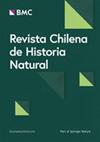Seascape connectivity: ontogenetic migration for Haemulon flavolineatum
IF 1.4
4区 环境科学与生态学
Q3 BIODIVERSITY CONSERVATION
引用次数: 0
Abstract
In the seascape, species migrate between ecosystems to complete their life cycles, and such ontogenetic migrations create functional connections between ecosystems. Nevertheless, the scarcity of information on patch distribution, species life history and ecology limits its application in Marine Protected Areas (MPA) management. We use a potential connectivity network approach to analyze how Haemulon flavolineatum might move through a complex and diverse seascape by simulating part of its life cycle migrations among three ecosystems (reef, mangrove, and seagrass) in the MPA of Bahía Portete-Kaurrele (BPK), Colombia. We used available ecosystem cover maps to conduct habitat fragmentation analyses and evaluate structural connectivity in BPK using eight indices that describe ecosystem patches and how they are related. With published information on the H. flavolineatum home range and its ontogenetic migration distances, we estimated the potential functional connectivity (CONNECT and migration distances) between ecosystems by building bipartite graphs. The benthic habitat configuration of the BPK could allow Haemulon flavolineatum to complete at least two stages of its life cycle (stage 5 mangroves to reefs being more likely than stage 4 seagrass to mangroves). Ontogenetic migrations is possible since, patches of different ecosystems were highly intermixed (76%) rather than grouped (58%); reefs showed higher values of structural indices (patch area, largest patch, shape complexity, functional links) than mangrove (shortest distance to the nearest neighbor) and seagrass (representativeness); and juveniles migrate from mangroves to reef patches along the bay, but they could be isolated by distance when moving from particular seagrass to mangrove patches. Our methodological approach, which integrates ecological information (evidence-based ranges of species migration distances between habitat patches) and the seascape (spatial configuration of habitat patches and fragmentation) is novel for a marine fish species with ontogenetic migration to search for the likelihood of completing its life cycle stages. We discuss the need for ecological information on French grunts and the need to validate future models and scenarios.海景连通性:Haemulon flavolineatum 的本体迁移
在海景中,物种在生态系统之间迁移以完成其生命周期,这种本体迁移在生态系统之间建立了功能联系。然而,由于缺乏有关斑块分布、物种生活史和生态学的信息,限制了其在海洋保护区(MPA)管理中的应用。我们采用潜在连通性网络方法,通过模拟哥伦比亚波尔蒂特-考雷勒湖(BPK)海洋保护区内三个生态系统(珊瑚礁、红树林和海草)之间的部分生命周期迁移,来分析 Haemulon flavolineatum 如何在复杂多样的海景中移动。我们利用现有的生态系统覆盖图进行了栖息地破碎化分析,并使用描述生态系统斑块及其相互关系的八个指数评估了BPK的结构连通性。根据已公布的黄线鲃原生地及其本体迁移距离的信息,我们通过构建双方格图估算了生态系统之间潜在的功能连通性(CONNECT和迁移距离)。BPK 的底栖生境配置可使 Haemulon flavolineatum 完成其生命周期的至少两个阶段(从红树林到珊瑚礁的第 5 阶段比从海草到红树林的第 4 阶段更有可能)。不同生态系统的斑块高度混合(76%),而不是分组(58%);礁石的结构指数(斑块面积、最大斑块、形状复杂性、功能联系)高于红树林(到最近邻居的最短距离)和海草(代表性);幼体沿海湾从红树林迁移到礁石斑块,但当它们从特定的海草斑块迁移到红树林斑块时,可能会被距离隔离。我们的方法综合了生态信息(基于证据的栖息地斑块间物种洄游距离范围)和海景(栖息地斑块和破碎化的空间配置),这对于具有本体洄游的海洋鱼类来说是新颖的,可用于寻找完成其生命周期各阶段的可能性。我们讨论了对法国噜噜鱼生态信息的需求以及验证未来模型和方案的必要性。
本文章由计算机程序翻译,如有差异,请以英文原文为准。
求助全文
约1分钟内获得全文
求助全文
来源期刊

Revista Chilena de Historia Natural
环境科学-生态学
CiteScore
2.50
自引率
18.20%
发文量
9
审稿时长
>36 weeks
期刊介绍:
Revista Chilena de Historia Natural (RCHN) publishes original research dealing with past and present phenomena from organismic to higher levels of biological organization, considering both empirical and theoretical studies on all kinds of taxa and environments.
The major areas covered by RCHN are: botany and zoology; physiological and behavioral ecology; population biology; community and ecosystem ecology; systematics, biogeography and evolution.
 求助内容:
求助内容: 应助结果提醒方式:
应助结果提醒方式:


